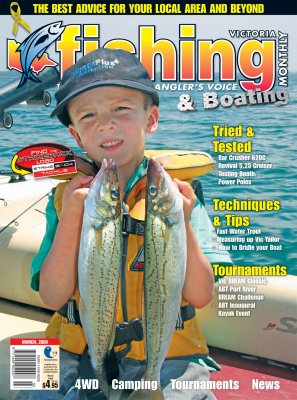AVOID YAWING HOW TO BRIDLE YOUR BOAT by Jarrod Day
 Basic boat handling skills are learnt over time. As they say, practice makes perfect and the more you venture into the big blue the better and easier the basics become. One boat handling skill that can be very useful to boaters - but which many may not be familiar with - is how to avoid yawing.
Basic boat handling skills are learnt over time. As they say, practice makes perfect and the more you venture into the big blue the better and easier the basics become. One boat handling skill that can be very useful to boaters - but which many may not be familiar with - is how to avoid yawing.
Yawing occurs while the boat is under anchor. Often it is caused by the wind blowing more strongly than the current, making the boat shift from side to side. Likewise, some boats may have a large cabin or canopy that is prone to catching the wind, which can also cause this effect.
Anglers who fish in Port Phillip Bay know all too well that yawing is a major problem. This mainly occurs from Mt Martha and Altona to the top of the Bay, where the current isn't as strong.
Those casting a bait in Western Port still deal with yawing but usually only when approaching a tide change, as the force of the current weakens and the strength of the wind takes over.
For an angler, yawing poses many problems even when the wind is low. When the boat moves from side to side, your lines will become slack and the boat moves over the top of them. This creates line tangles and often missed bites from fish; all in all you can become very frustrated and have a bad day on the water.
To avoid the boat from yawing, a small simple device called an Ezy Lay can take this problem away. The Ezy Lay bridle system is designed for just one reason - to keep your boat in the one position while at anchor.
SETTING THE BRIDLE
The Ezy Lay system is a small length of rope with a yellow M-style plastic clip attached to one end.
The Ezy Lay works by weaving the M-clip through the anchor rope to attach to the rope. The opposite end of the Ezy Lay rope can then be tied off onto a bollard or cleat on the transom.
To set the Ezy Lay correctly, let out some anchor rope while simultaneously carrying the end of the rope towards the transom. The more anchor rope you let out the further away the M-clip will move down the anchor rope. After you have it approximately where you want it, you can pull tight the end of the Ezy Lay rope and secure it to the transom bollard.